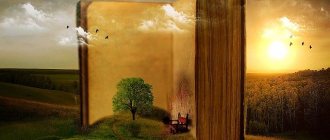Description of larch
Linden Larch Lotus
In winter, larch looks like a dried spruce: bare branches, without needles, grayish bark covered with cracks. In spring, the branches of the tree are covered with green needles. Having touched them, you are surprised - they are soft, tender, not prickly at all. In autumn they turn golden yellow and fall off in winter. This is the advantage of larch over other conifers.
After all, perennial needles become polluted, which makes it difficult for the plant to breathe and photosynthesize. Therefore, larch feels good in the dusty air of cities.
In winter, small tubercles - buds - are clearly visible on the branches. From the topmost end of the branch grows a rather long stem with single needles. Shortened shoots appear from the lateral buds - a bunch of many needles.
Cones on larch look different. Male ones are oval in shape and the size of a raspberry. Under each scale are hidden two sacs of pollen. Female cones are cylindrical, three times larger than male ones. Under each thick scale there are two ovules - the rudiments of future seeds. The thick seed scale is certainly covered with a thin covering scale. When the pollen spills out of the male cones, they dry out. By autumn, female cones grow, their scales become woody. Winged seeds fall out of the cones in the fall; in order to germinate, they definitely need moisture and cold. Seeds kept warm in winter will not sprout in spring.
Larch is a tall tree, up to 50 m, and lives up to 500 years. Its wood is strong and so heavy that it sinks in water. However, under Peter I, ships were built from it, since it contains a lot of resin and does not rot for a long time. Ancient architects knew this property. In Venice, a city on the water, houses were built on larch piles. They stood under load for 500 years. In Poland, many larch buildings of the same age have been perfectly preserved to this day.
But it was precisely because of its strong and durable wood that larch was mercilessly cut down in Europe. A lot of larch remains beyond the Urals and in Siberia. Larch forests cover the Chita, Amur regions, and Yakutia. And in Sakhalin and Kamchatka, this tree took on an unusual shape - its trunk looks like a bottle and is covered with exceptionally thick bark, 25 cm thick.
In North America, in Canada, large areas are occupied by forests of American larch . They also use it to build houses and make beautiful and durable parquet.
Linden Larch Lotus
Presentation "Larch"
Larch, although a coniferous tree, sheds its needles. You will find out what you can get from its needles and wood by watching the presentation
Viewing the contents of the document "Presentation "Larch""
GBOU LPR "Stakhanovskaya Secondary School No. 32"
primary school teacher
Experts classify larch as a coniferous plant, but unlike spruce or pine, it annually sheds its green attire for the winter. Because of its ability to shed its needles annually, larch got its name
Straight, like columns, larch trees are real forest giants. 30-40 meters in height is not the limit for them; they can also be 50 meters high with trunks up to 2 meters thick.
Why does larch shed its needles?
By shedding its needles, the larch thereby reduces the evaporation of water by the crown in winter. You have to save money, since the roots are not able to absorb moisture from thoroughly frozen soil.
- Larch is especially good in spring and autumn. Its long, thin straw-yellow branches in early spring (in just one or two warm, fine days) are colored with thick brushes of delicate bright green needles. Against their emerald background, like the lights of a Christmas tree, reddish, pink or green lights-cones and yellow spikelets “flare up” one after another. The larches are festively beautiful at this time. A light breeze lifts clouds of golden pollen above their crowns. Pollination is underway.
Larch is a monoecious plant: its female cones and male spikelets are on the same tree.
- Larch wood is used in modern shipbuilding, in the production of aircraft, cars, and mechanical engineering. Without special impregnation, it is used on sleepers and telegraph poles and is especially good for piers, bridges, dams, where, as they say, it is not susceptible to demolition.
- But people are not content with wood alone, but transform it into many useful components. From one cubic meter of larch wood, with the help of the miracle of chemistry, 200 kilograms of cellulose or the same amount of grape sugar, 2000 pairs of stockings or 1500 meters of silk fabric, 6000 square meters of cellophane or 700 liters of wine alcohol are obtained
- . Dozens and hundreds of other valuable substances are made from larch wood processing products: turpentine and acetic acid, rosin and sealing wax, matches and much more. Tannins are extracted from larch wood for tanning leather and dyeing fabrics, and essential oil is extracted from pine needles. However, even during its lifetime the tree produces high-quality resin, or, as it is commonly called on the world market, Venetian turpentine. It is mined by tapping growing trees and is widely used in electrical and paint industries.
Larch is famous for its durability. True, it does not live that long in comparison with other species: about 400-500 years, but its wood, used in buildings, is extremely durable. It has been perfectly preserved for many hundreds and even thousands of years, acquiring greater strength and original color over time.
Slide captions:
Coniferous trees Kravtsun M.G. Primary school teacher MBOU Egorlyk secondary school No. 1
Guess the riddles.
What kind of girl is this: Not a seamstress, not a craftswoman, She doesn’t sew anything herself, But she wears needles all year round. Spruce
It is many hundreds of years old. He is dressed in a green sheepskin coat. Although it grows in the remote taiga, He is always held in high esteem. After all, He is very rich in cones for both adults and children. And in the cones, whatever you say, the nuts are delicious inside. Cedar
A relative has a Christmas tree with non-thorny needles, but, unlike the Christmas tree, those needles fall off. Larch
This grandmother is a hundred years old, She has no hump, She sticks out high, She looks far away, Death will come for the old woman - The grandmother will become a hut. Pine
Conifers are one of the most ancient groups of plants, dating back about 300 million years. Representatives of coniferous trees: cypress, yew, cedar, fir, juniper, pine, spruce, etc. Coniferous trees grow in abundance, in one form or another, throughout the globe, in all parts of the world. Quite often, coniferous trees dominate other plants. The size of an adult coniferous tree can reach 100 meters in height (the tallest coniferous tree is Sequoia evergreen - 115.2 meters). In addition, representatives of coniferous trees are not only the tallest, but also the thickest - Taxodium Mexicana (11.42 meters in diameter), the oldest - Pine longevity (4700 years) and the largest - Sequoia dendron giant (with a volume of 1486.9 m³) representatives of the flora. In Russia, the most common are spruce, pine, fir, cedar, and juniper.
Record holders
Thick -Taxodium Mexicana (11.42 m in diameter)
Old – Long-lasting pine (4700 years)
Large – Giant Sequoia (with a volume of 1486.9 m³).
Quiz
Name 5 coniferous trees (spruce, pine, fir, cedar, larch) 2. Who is spruce friends with in winter? (spruce is friends in winter with crossbill, woodpecker and squirrel) 3. Why do spruce trees have the shape of a triangle? (snow easily slides off them and does not break the branches). 4. Which coniferous tree sheds its needles for the winter? (larch)
5. Does pine or spruce have longer needles? (near pine) 6. What climate do conifers like? (cold climate) 7. What birds eat conifer cones? (crossbill, nutcracker) 8. Which coniferous tree has cones - berries? (juniper)
Answer or solution 2
Ask a question Login 34Isaev ValeriyBiologyJuly 13 10:02 Prepare a message on the topic “Larch is an unusual coniferous tree.”
Answer or solution1
Larch is a coniferous tree belonging to the pine family. This type of tree is quite popular and they grow mainly in the northern part of Russia. The age of larch is 300-400 years. although there are individual specimens whose age exceeds 800 years. From our own experience we can say that the tree is very stately and majestic. Next to an adult larch you feel small and fragile.
If favorable conditions are created for the growth of larch, the tree will grow up to 50 meters in height. The trunk of such a huge tree reaches one meter in diameter. In young trees, the crown shape resembles a cone. In mature trees, the crown is looser; it is all translucent so that the rays of the sun can freely penetrate through it.
Larch bears fruit with reddish cones. Seeds ripen inside each cone, and their germination rate is extremely low. Abundant fruiting is repeated every 7 years. The seeds take a very long time to ripen.
Larch easily tolerates low temperatures; in the far north, the tree can withstand temperatures down to -60 degrees. But the tree may not be able to withstand strong winds. Since the tree has a superficial root system, windbreaks can be destructive for larch.
Larch is a coniferous tree belonging to the pine family. This type of tree is quite popular and they grow mainly in the northern part of Russia. The age of larch is 300-400 years. although there are individual specimens whose age exceeds 800 years. From our own experience we can say that the tree is very stately and majestic. Next to an adult larch you feel small and fragile.
If favorable conditions are created for the growth of larch, the tree will grow up to 50 meters in height. The trunk of such a huge tree reaches one meter in diameter. In young trees, the crown shape resembles a cone. In mature trees, the crown is looser; it is all translucent so that the rays of the sun can freely penetrate through it.
Larch bears fruit with reddish cones. Seeds ripen inside each cone, and their germination rate is extremely low. Abundant fruiting is repeated every 7 years. The seeds take a very long time to ripen.
Larch easily tolerates low temperatures; in the far north, the tree can withstand temperatures down to -60 degrees. But the tree may not be able to withstand strong winds. Since the tree has a superficial root system, windbreaks can be destructive for larch.
Slide captions:
Evergreen spruce is the oldest tree in the Russian forest. Reaches 30 m. Spruce is frost-resistant and shade-tolerant.
Fir cones and seeds
Pine An evergreen tree up to 40m high. The crown is raised high, cone-shaped, and then rounded, wide. Pine lives on average up to 350 years.
Needles from the pine
Pine “blooms” in late May - early June
Cones and seeds from the pine tree
Cedar is a majestic, powerful tree. The height of the cedar is 40-42 meters, the thickness of the trunk is up to 2 meters. The cones are large. People collect pine seeds - “nuts” for future use; they are a very tasty delicacy. Cedar
Needles for food
Cedar cones
Larch Larch grows up to 50 meters and lives up to 400 years. In autumn, larch turns yellow like deciduous trees, and in winter its needles fall off.
Larch cones
Juniper An evergreen light-loving coniferous multi-stemmed tree or shrub 2-6 m in height. The crown is multi-peaked and dense. Juniper is a long-liver, its age can sometimes range from 600 to 3000 years,
The “fruits” of juniper, cone berries, are green at first, but in the second year they are blue-black with a bluish bloom and resinous pulp. Cone berries are used in cooking as a seasoning. Pine needles and cone berries are used for smoking fish and meat.
Preview:
To use presentation previews, create a Google account and log in to it: https://accounts.google.com





